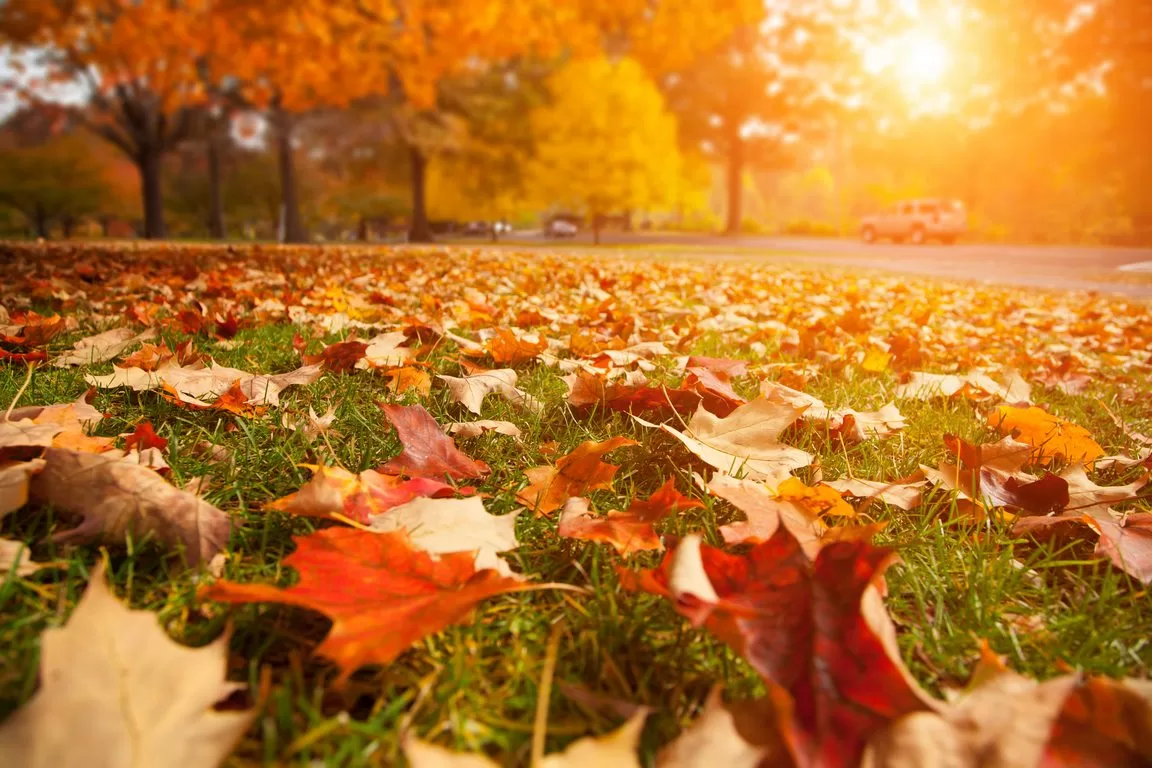Regardless of how diligent you’ve been with your lawn over the warmer months when fall comes, it’s likely to be looking less green, tired, and worn out. This is because the colder air signals that it’s almost time for grass hibernation.

That said, it doesn’t mean that you should be skipping yard work altogether. There are still some things you need to do to prepare your lawn for its dormant period.
This article shares six essential lawn and landscape maintenance and preparation tips for the winter season.
As the weather gets colder, your lawn won’t grow as fast. But it doesn’t mean that you’re off the hook on your mowing duties.
In general, you should continue to mow your lawn until it stops growing, or every 10–14 days until all the leaves have fallen from the trees. Make sure to set the blades at least half-inch higher than usual to avoid cutting the grass too short.
Once all the leaves have fallen and before the first ice sets in, you want to mow your grass for the last time. You need to set the blade about 1–1 ½ inches lower.
This cut will not only encourage deeper root growth but also helps in protecting the grass against damage and fungus growth during the winter season. What’s more, this final cut can make the rest of your winter lawn-prepping tasks, such as raking, easier.
Top dressing refers to using organic matter, such as compost, to cover the top of your lawn. This method provides numerous benefits. Mulching helps improve the lawn’s nutrient content as well as its root formation.
Not only that, but top dressing also increases your lawn’s moisture absorbability and resistance to drought. What’s more, it also reduces the risk of compaction of the soil, ensuring a healthier soil overall.
Read Also:
During the hot season, you probably have a lot of unsightly bare patches on your lawn. The good news is that fall is the best time to fill in those bare spots or add more grass to thinning lawns. Thanks to the cooler temperature and abundance of moisture, it’s easier to reseed bare spots in your lawn.
Also, planting grass seeds during fall means it doesn’t have to compete with invasive spring weeds. This gives it a better chance to root deeper. And when spring comes, a thicker, deep-rooted lawn will naturally crowd out weeds.
For the best results, opt for grass seeds for cool seasons. Apply the grass seed generously on bare spots and all over your lawn. Cover the area lightly with straw or mulch to prevent birds from eating the seeds. Make sure to water the seed generously and keep it moist until the first sprout.
Aerating your lawn involves punching small holes in your turf to remove compacted soil. As a result, it provides extra aid for your grass and allows nutrients and water to penetrate deeper into the soil, promoting healthier and stronger roots.
For small yards, you can use a pair of aerating shoes with spikes. You simply walk across your lawn to create the holes and aerate your turf. Or you can also use a pogo stick aerator to punch out several plugs of soil at a time. For wider lawns, you can invest in or rent a motorized aerator.
Fallen leaves can smother your grass and create an ideal habitat for fungal spores and insects that can eat your grass or cause diseases that impact your grass, Thus, it’s important to regularly rake fallen leaves throughout the fall season and prevent them from piling up.
If you’re tired of raking, you can invest or rent a leaf blower to remove large quantities of dead leaves quickly. The mulching attachment of most mowers can also be beneficial in breaking up leaves into smaller fragments which you can use as a top dressing.
Most people leave weeds alone as the winter season comes with the belief that they will die with the cold weather. However, weeds left on your lawn over winter will only come back with a vengeance in the spring.
The weed seeds will only be distributed more broadly during winter and will hog limited resources such as water and soil nutrients. Pulling the weeds can keep your lawn healthier. Removing them from your garden beds also makes it easier to plan during spring.
As you can see, winter doesn’t have to be a bad season for your lawn. By taking the necessary steps to prepare your lawn for the cold season, you can ensure that it can endure the harsh weather and come back to its lush glory when spring comes.